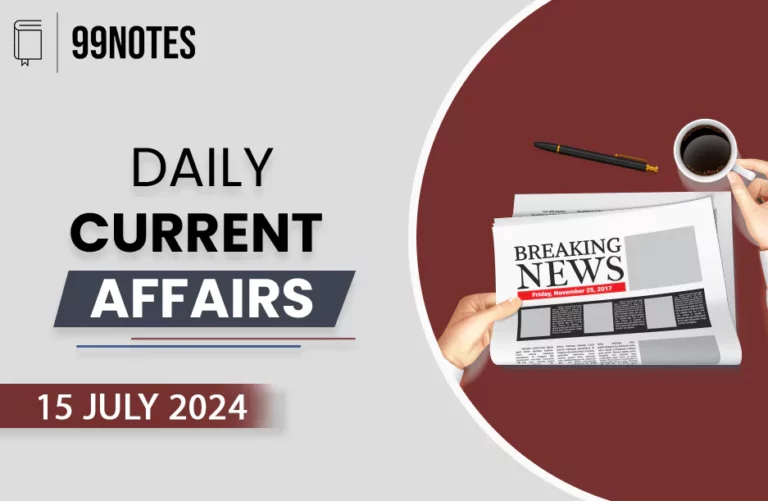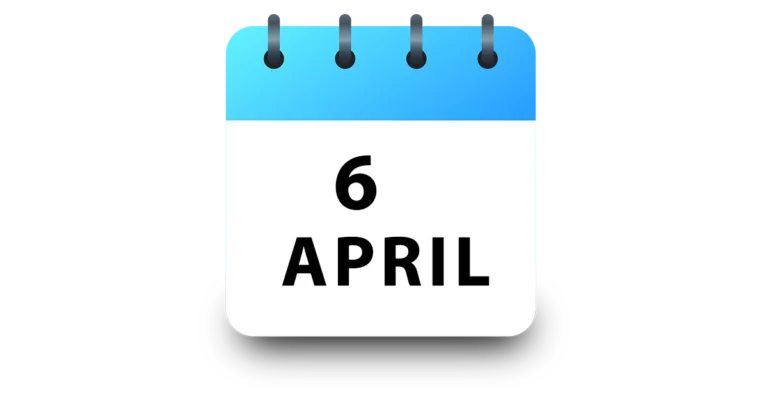3 November 2023 : Daily Current Affairs
Daily Current Affairs
3-November-2023
1. SC seeks data on donations through electoral bonds, reserves verdict on scheme.
Topic: GS2 – Indian polity.
Context:
- The Supreme Court of India has given the Election Commission of India (EC) a two-week deadline to provide updated data, until September 30, 2023, regarding political contributions received by political parties through the electoral bonds scheme.
- A five-judge Bench, led by Chief Justice of India D.Y. Chandrachud, has reserved its judgment on the challenge to the electoral bonds scheme.
More information on this news:
- The Court stressed that the purpose of the scheme is to sanitize the political donation process, reduce unaccounted-for cash in the electoral system, promote the use of authorized banking channels, and enhance transparency.
- Chief Justice Chandrachud expressed concern that the scheme should not be used to legitimize kickbacks and quid pro quo relationships between political parties and those who financially support them.
- Solicitor-General Tushar Mehta objected to the claims made by the petitioners, arguing that the scheme has facilitated the influx of black money into political parties from anonymous sources.
- The government defended its efforts to combat black money and corruption, rejecting the petitioners’ pessimistic outlook on the electoral bonds scheme.
Electoral Bonds Scheme:
- The Electoral Bonds Scheme was launched in 2018 by the Government of India to promote transparency and accountability in political funding.
- Electoral bonds are bearer instruments that can be purchased by any Indian citizen or company from specified branches of the State Bank of India (SBI).
- The bonds are available in denominations of Rs.1,000, Rs.10,000, Rs.1 lakh, Rs.10 lakh and Rs.1 crore.
- The bonds can be donated to any eligible political party registered with the Election Commission of India (ECI).
- The political parties can redeem the bonds through their designated bank accounts with SBI.
- The identity of the purchaser of the bonds is not known to the political party that receives them.
- The scheme is aimed at reducing the use of black money in political funding.
Analysis of the scheme:
- The Electoral Bonds Scheme has been criticized by some for its lack of transparency and accountability. Critics argue that the scheme allows for anonymous donations to political parties, which could lead to corruption and undue influence. They also argue that the scheme makes it difficult to track the sources of political funding.
- However, supporters of the scheme argue that it is a necessary step to reduce the use of black money in political funding. They argue that the scheme is transparent and accountable, and that it provides a mechanism for citizens to donate to political parties without having to reveal their identity.
Question: Evaluate the Electoral Bonds Scheme in the context of its impact on transparency and accountability in political funding in India.
2. Kerala govt. moves Supreme Court against Governor over pending Bills
Topic: GS2 – Indian polity.
Context:
- The Kerala government has approached the Supreme Court seeking a declaration that Governor Arif Mohammed Khan has “failed to exercise his Constitutional powers and duties” by holding Bills passed by the State Assembly for an extended and indefinite period.
- The State government argued that the Governor’s actions subverted the Constitution and were manifestly arbitrary, keeping the Bills passed by the Assembly pending indefinitely.
Powers of the Governor regarding bills passed by the state legislature:
- Assent:The Governor can give assent to the bill, which makes it become a law.
- Withholding assent:The Governor can withhold assent to the bill, which prevents it from becoming a law.
- Returning the bill for reconsideration:The Governor can return the bill to the state legislature for reconsideration, with or without suggestions. However the bill can be sent for the reconsideration only once.
- Reserving the bill for the consideration of the President:The Governor can reserve the bill for the consideration of the President. The President can then either give assent to the bill, withhold assent, or return it to the state legislature for reconsideration.
Issues with discretionary power of Governor:
- Arbitrary use of power: The Governor’s discretionary powers are subjective and can be used arbitrarily, without any clear guidelines or checks and balances.
- Lack of transparency and accountability:The Governor is not accountable to the state legislature or the people for the exercise of their discretionary powers.
- Potential for misuse:The Governor’s discretionary powers can be misused to interfere with the functioning of the state government or to favor a particular political party.
- Undermining the principles of democracy:The discretionary powers of the Governor undermine the principles of democracy, such as the separation of powers and the rule of law.
Question: Discuss the issues associated with the discretionary power of the Governor in India and suggest reforms to make it more accountable and transparent.
3. Understanding worker productivity
Topic: GS3 – Indian economy
Worker Productivity
- Worker productivity is the quantum of output value per unit of labour (time) cost at a micro level.
- At a macro level,it is measured in terms of the labour-output ratio or change in Net Domestic Product (NDP) per worker in each sector.
- In certain types of services,especially ones involving intellectual labour, measuring the value of the output is difficult, so the income of workers is usually taken as proxies to suggest productivity.
Relationship Between Worker Productivity and Economic Growth
- An increase in productivity made through any sector is likely to affect the value added and the accumulation or growth in the economy.
- However,the relationship between the two could be quite complex.
- Increasing productivity may not lead to prosperity of the workers,as the share of profits may increase at the expense of wages.
India’s Worker Productivity
- In India,the share of wages and salaries has declined while the share of profits has increased over the years.
- This is perhaps linked to the informalisation of employment,labour laws and the development and regulation regime becoming unfavourable to workers.
- However,a US based multi-national workforce management firm has observed that Indians are among the most hard working employees in the world.
Comparisons with Japan and Germany
- Comparisons of India’s economy with those of Japan and Germany economies are not apt.
- Japan and Germany are neither comparable in terms of the size and quality of labour force nor in terms of the nature of their technological trajectories or their socio-cultural and political structures.
Conclusion
- Enhancing social investments,focusing on exploring domestic consumption potential for increased productivity with a human centric assessment of development achievements is the way to a more sustainable and desirable outcome.
4. Antony Blinken, Lloyd Austin to visit New Delhi next week for ‘2+2’ dialogue
Topic: GS2 – International relations.
Context:
- Next week, Antony Blinken and Lloyd Austin will travel to New Delhi for a ‘2+2’ dialogue, where they will meet with India’s External Affairs Minister and Defence Minister.
US-India 2+2 meeting next week
- The meeting will discuss both bilateral and global concerns and developments in the Indo-Pacific.
- Some of the topics that are expected to be discussed include the Israel-Hamas conflict, the Ukraine-Russia war, the reform of international financial institutions, China, the South Asian neighbourhood, the implementation of the road map for US-India Defence Industrial Cooperation, and defence equipment co-production.
- The Modi government’s record on democratic norms and rights is also expected to be discussed.
- The 2+2 meeting is likely to see a continuation of the initiatives announced during Prime Minister Narendra Modi’s state visit to Washington DC in June.
5. SC Collegium proposes new Chief Justices for three HCs
Topic: GS2 – Indian polity.
Context:
- Supreme Court Collegium recommended the government to appoint new Chief Justices for the High Courts of Uttarakhand, Orissa, and Meghalaya.
Supreme Court Collegium System:
- The Supreme Court Collegium is a body of five seniormost judges of the Supreme Court, headed by the Chief Justice of India.
- The Collegium is responsible for recommending appointments and transfers of judges to the Supreme Court and high courts.
- The Collegium system was evolved by the Supreme Court in the 1990s as a way to ensure the independence of the judiciary.
- The Collegium’s recommendations are binding on the government, which cannot appoint or transfer any judge without its consent.
- In 2015,the government passed the National Judicial Appointments Commission (NJAC) Act, which sought to replace the Collegium system with a new system of judicial appointments.
- However, the Supreme Court struck down the NJAC Act in 2016.
- The Collegium system remains in place today, but there have been calls for reform.
Here are some of the pros and cons of the Supreme Court Collegium system:
Pros:
- Ensures the independence of the judiciary
- Prevents the government from interfering in the appointment and transfer of judges
Cons:
- Opaque and unaccountable
- Allegations of nepotism and favoritism
- Does not take into account the views of the executive or the legislature
Question: Discuss the role and significance of the Collegium system in the appointment of judges to the higher judiciary in India.
6. NCERT to introduce electoral literacy content in textbooks
Topic: GS3 – Indian education.
Context:
- The National Council of Educational Research and Training (NCERT) will introduce electoral literacy content in textbooks for students from Classes 6 to 12.
- The initiative will also extend to the curricular framework for colleges and universities.
- The Election Commission of India (EC) and the Education Ministry signed a memorandum of understanding (MoU) to implement these measures.
Electoral literacy:
What is electoral literacy?
Electoral literacy is the ability of citizens to understand and participate in the electoral process. It includes the knowledge of one’s rights and responsibilities as a voter, the ability to cast a valid vote, and the ability to evaluate candidates and parties.
Why is electoral literacy important?
Electoral literacy is important because it ensures that citizens are able to participate meaningfully in the democratic process. This helps to ensure that the government is elected by a representative sample of the population, and that the policies that are implemented reflect the views of the majority of citizens.
How can electoral literacy be improved?
Benefits of electoral literacy
- Increased voter turnout:Electoral literacy can lead to increased voter turnout, as citizens are more likely to vote if they are informed about the electoral process and the candidates and parties on offer.
- Reduced invalid votes:Electoral literacy can help to reduce the number of invalid votes, as citizens are more likely to cast a valid vote if they are aware of the rules and procedures.
- Informed decision-making: Electoral literacy can help citizens to make informed decisions about who to vote for, as they are able to evaluate the candidates and parties based on their policies and positions on the issues.
- Increased civic engagement:Electoral literacy can lead to increased civic engagement, as citizens are more likely to be interested in and participate in the democratic process if they are informed about their rights and responsibilities.
Question: Discuss the importance of electoral literacy in a democracy. What are the challenges faced in improving electoral literacy in India? Suggest measures to overcome these challenges.
7. Developing countries need at least 10 times more funds for climate adaptation: UN report
Topic: GS3- Environment
Context:
- A recent UN assessment highlighted the considerable lack of funding currently available to developing countries for adaption measures, with the money falling well short of the scale required, despite the rapidly growing hazards associated with climate change that demand larger efforts to adapt.
Declining Funding for Adaptation:
- A 15% drop from 2020 was observed in the amount of USD 21 billion allotted to developing nations for adaptation efforts in 2021.
- However, a recent study, as detailed in the most recent edition of the Adaptation Gap Report by the UN Environment Programme, shows that developing nations together need at least USD 215 billion every year throughout this decade to carry out effective adaptation activities.
The Significance of Adaptation:
- For the sake of both ecosystems and human life, adaptation is essential, especially in emerging and extremely vulnerable nations with little resilience.
- These adaptation strategies cover a broad range of activities, including strengthening coastlines, erecting seawalls (particularly for island nations), experimenting with food crops resistant to temperature changes, developing climate-resilient infrastructure, safeguarding water supplies, and many other initiatives that assist local populations in adjusting to rising temperatures.
International Climate Finance Architecture:
- Under the international framework on climate change, developed nations have a duty to supply technology and financial support to poor nations so they can adapt to the changing climate.
- Developing nations are free to look for outside financial assistance, even though they may use their own resources.
- As part of their climate action plans, several nations have included adaptation criteria in their Nationally Determined Contributions (NDCs).
The Adaptation Finance Gap:
- The Adaptation Gap Report draws attention to a significant and growing disparity between the expected needs for adaptation financing which range from USD 215 billion to USD 387 billion and the current flows of funding which total USD 21.3 billion.
- According to the research, the adaptation gap is at least 50% larger than earlier estimates, ranging from 10 to 18 times greater than existing international adaptation financial flows.
Challenges in Closing the Gap:
- The term “climate finance” refers to the efforts made to expand financial flows for all climate-related demands, including adaptation.
- Even after three years, industrialized nations have not yet reached this goal, despite their 2009 pledge to raise at least USD 100 billion in climate money yearly starting in 2020.
- The need for climate finance has grown significantly, with estimates currently in the trillions of dollars annually.
- Although industrialized nations pledged to increase adaptation funding at the Glasgow climate summit in 2021, the analysis suggests that this goal along with the establishment of a new climate financing target exceeding USD 100 billion annually will not be enough to address the financing gap.
Conclusion:
- The UN’s Adaptation Gap Report concludes by highlighting the widening gap between the amount of money actually available and what is required for developing nations to adapt to climate change.
- Although there have been international agreements to address this issue, the research indicates that more work is necessary to bridge the financing gap for adaptation and provide vulnerable countries with sufficient support for their adaptation efforts.
8.UNESCO Names Kozhikode ‘City of Literature’: What This Tag Means
Topic: Prelims
Context:
- Gwalior, in Madhya Pradesh, and Kozhikode, in Kerala, have just joined 55 other cities in UNESCO’s Creative Cities Network (UCCN).
- Seven different creative fields—crafts and folk arts, design, film, cuisine, literature, media arts, and music are represented by these carefully chosen cities.
- Gwalior was honored for its musical legacy, while Kozhikode was recognized for its literary accomplishments.
The UNESCO Creative Cities Network (UCCN):
- The UCCN was founded in 2004 with the goal of promoting cooperation between communities that value creativity as an essential component of sustainable urban development.
- This network, which aims to maximize the creative, social, and economic potential of the cultural sectors, spans 350 cities in more than 100 nations.
- It is in line with UNESCO’s objectives to support cultural variety and build resilience to issues like urbanization, rising inequality, and climate change.
- The UCCN promotes a creative culture in urban planning and problem-solving.
Objectives and Actions of the UCCN:
- Through collaborations with the public and private sectors as well as civil society, the UNESCO Creative Cities Network empowers its member cities to acknowledge creativity as an essential component of urban development.
- It seeks to increase opportunities for professionals in the cultural industry while establishing centers of creativity and innovation.
- It is anticipated that member cities will support the UN’s agenda for sustainable development.
- Encouraging the exchange of experiences, knowledge, best practices, creative exchanges, research, and other activities, the UCCN promotes its goals both locally and globally.
Indian Cities in the Network:
- Apart from Kozhikode and Gwalior, other Indian cities that are already included in the UNESCO Creative Cities Network are Varanasi (music), Srinagar (crafts and folk arts), and Chennai (music).
Kozhikode’s Literary Heritage:
- North Kerala’s Kozhikode is home to several significant characters in the state’s literary and cultural scene and has a rich literary and cultural heritage.
- The city fosters its literary legacy by serving as a center for eminent media outlets, publishing houses, and libraries.
- The first Malayalam book, “Kundalatha,” was written in Kozhikode in 1887 and is considered a seminal work of Malayalam literature by Appu Nedungadi.
- The city has produced a number of successful actors and filmmakers as well as well-known writers such MT Vasudevan Nair, Vaikom Muhammad Basheer, and SK Pottekkatt.
Annual Conference and Member Commitments:
- The annual conference, which unites mayors and other stakeholders from network towns across the globe to strengthen relationships and share information on policies and initiatives, is a notable aspect of the network.
- The next conference is planned in Braga, Portugal, in July 2024.
- Every four years, member cities are expected to submit Membership Monitoring Reports that demonstrate to their continued support of the UCCN’s purpose and include details about their accomplishments, action plans, lessons learned, and the effects of being named creative cities.
3) Navy veterans sentenced to death in Qatar: options before India
Topic: GS2- IR
Context:
- Eight Indians, all of whom were former members of the Indian Navy, were recently sentenced to death on espionage charges by a Qatari court, in an unexpected move.
- The Indian government is astonished by this judgment because death sentences are not usually issued by Qatar.
- Authorities in Qatar have not yet made public the exact allegations brought against the Indians.
Legal Process and Indian Response:
- The arrests were reported to the Indian Embassy in Doha in the middle of September, and on September 30 the inmates were given a brief opportunity to talk with their relatives.
- Since the proceedings are confidential, the Indian government has not revealed the particular charges and is currently considering its legal options.
- 44 Indians are now serving death sentences in nations including Kuwait, Saudi Arabia, and the United Arab Emirates, mostly for drug-related charges.
- India has a history of standing by its nationals who are facing the death penalty abroad.
Three Possible Courses of Action:
Three solutions are being considered by India to deal with the situation:
- The legal process: It intends to use the legal system to contest the death sentences in higher courts.
- Mercy Petition: The families have petitioned the Emir of Qatar for forgiveness, as he is renowned for pardoning people during Ramadan and Eid.
- Political and Diplomatic options: India is aggressively seeking a diplomatic and political solution to the problem. This strategy includes interacting with the government of Qatar and other outside parties in an effort to win support and find a way to stop the scheduled executions. It demonstrates India’s will to use diplomatic channels to defend its people and resolve the conflict peacefully.
Challenges
- Negotiating the accusations of spying for Israel in the midst of geopolitical sensitivities in the region is one of the biggest issues India faces.
- Navigating this delicate subject is critical for India at a time when the Israel-Hamas conflict is dividing the region.
- The results of India’s diplomatic efforts will not only decide what happens to these people, but they will also put the strength of India-Qatar relations which cover a range of topics including defense and economic cooperation to the test.
10. ‘Violent extremist organisation’ in India collected funds through well-structured networks: FATF
Topic: GS3- Internal Security
Context:
- A Recent Financial Action Task Force (FATF) report indicates that a “violent extremist organization under investigation” in India has been successfully soliciting money via offline and online fundraising methods in well-organized networks.
- Raising money at mosques and public areas was one of the organization’s strategies; the money raised was then utilized to buy guns, ammunition, and to train the group’s members.
- Though it doesn’t mention the group by name, the report’s findings on crowdsourcing for terrorism financing obliquely use the Popular Front of India (PFI) as a case study.
What is FATF?
- It establishes global guidelines designed to stop money laundering.
- The FATF seeks to create the political will required to implement these kinds of national legislative and regulatory reforms.
- In order to fight organized crime, corruption, and terrorism, the FATF has produced the FATF Recommendations, often known as the FATF Standards.
- These standards guarantee a coordinated global response.
- The FATF strives to halt the financing of Weapons of Mass destruction (WMDs) as well.
Complex Fundraising Networks
- According to the FATF report, the funding networks for this extremist group are nationwide and involve both domestic and foreign transactions, which makes the issue extremely difficult to look into.
- These money were utilized for member training in addition to the purchase of weapons and ammo.
- To provide consistent revenue for efforts related to terrorism, a portion of the money obtained through crowdfunding was invested in companies and real estate ventures.
Government Actions and Banned Associations
- The PFI was deemed a “unlawful association” by the Ministry of Home Affairs in September of the previous year.
- Operations against the PFI, its offices, and its members were carried out nationally by the National Investigation Agency (NIA) and the Directorate of Enforcement Directorate (ED).
- The PFI, which was established in 2007 by the union of three Muslim organizations in southern India, has positioned itself as a group that defends the rights of marginalized groups, Dalits, and minorities.
Crowdfunding for Terrorist Financing
According to the FATF report, there are four main ways that crowdfunding platforms can be used to finance terrorism:
- misusing websites or platforms dedicated to crowdfunding;
- using social media and messaging apps;
- misusing humanitarian, charitable, or non-profit causes; and
- combining crowdfunding with virtual assets.
Violent extremists and terrorists can raise money in a variety of ways, including by starting crowdfunding projects, publicizing them on social media, and asking for donations in virtual goods.
Challenges in Regulation and Risk Assessment
- The Financial Action Task Force (FATF) draws attention to disparities in the regulation of anti-money laundering and counter-terrorist financing (AML/CFT) in various jurisdictions, with many of them lacking comprehensive risk assessments pertaining to crowdfunding operations.
- There is still a dearth of comprehensive data regarding the misuse of crowdsourcing for financing terrorism.
- In the context of crowdfunding, the research emphasizes the necessity of taking more aggressive steps to reduce these risks and harmonize AML/CFT regulations.
For Enquiry

3 November 2023 : Daily Current Affairs

3 November 2023 : The Hindu Editorial Notes PDF

2 nov 2023 : Daily Quiz

2 Nov 2023 : Daily Answer Writing

2 Nov 2023 : Indian Express

2 Nov 2023 : PIB

2 November 2023 : The Hindu Editorial Notes PDF

2 November 2023 : Daily Current Affairs

1 nov 2023 : Daily Quiz

1 Nov 2023 : Daily Answer Writing
Daily Current Affairs 3 November 2023 : Daily Current Affairs Daily Current Affairs
2-November-2023
1. October gross GST collections climb to ₹1.72 lakh crore.
Topic:…
November 2023 The Hindu 3 November 2023 : The Hindu Editorial Notes PDF The Hindu Editorial
3-November-2023
1. Biosphere reserves are evolving as pockets of hope.
Topic:…
Daily Quiz 2 nov 2023 : Daily Quiz 2 Nov 2023 : Daily Quiz…
mains answer writing 2 Nov 2023 : Daily Answer Writing Mains Answer Writing
2-November-2023
1. How has judicial activism in India contributed to the protection…
Indian Express 2 Nov 2023 : Indian Express Indian Express
2-November-2023
1) Apple’s Alert
Context:
Ahead of the approaching elections, privacy…
November 2023 PIB 2 Nov 2023 : PIB PRESS INFORMATION BUREAU
2-November -2023
1. Government e-Marketplace (GeM) witnesses remarkable growth…
November 2023 The Hindu 2 November 2023 : The Hindu Editorial Notes PDF The Hindu Editorial
2-November-2023
1. Impacting a woman’s freedom to reproductive choices.
Topic: GS3…
Daily Current Affairs 2 November 2023 : Daily Current Affairs Daily Current Affairs
2-November-2023
1. October gross GST collections climb to ₹1.72 lakh crore.
Topic:…
Daily Quiz 1 nov 2023 : Daily Quiz 1 Nov 2023 : Daily Quiz…
mains answer writing 1 Nov 2023 : Daily Answer Writing Mains Answer Writing
1-November-2023
1. The public has debated instances in which the President’s…



